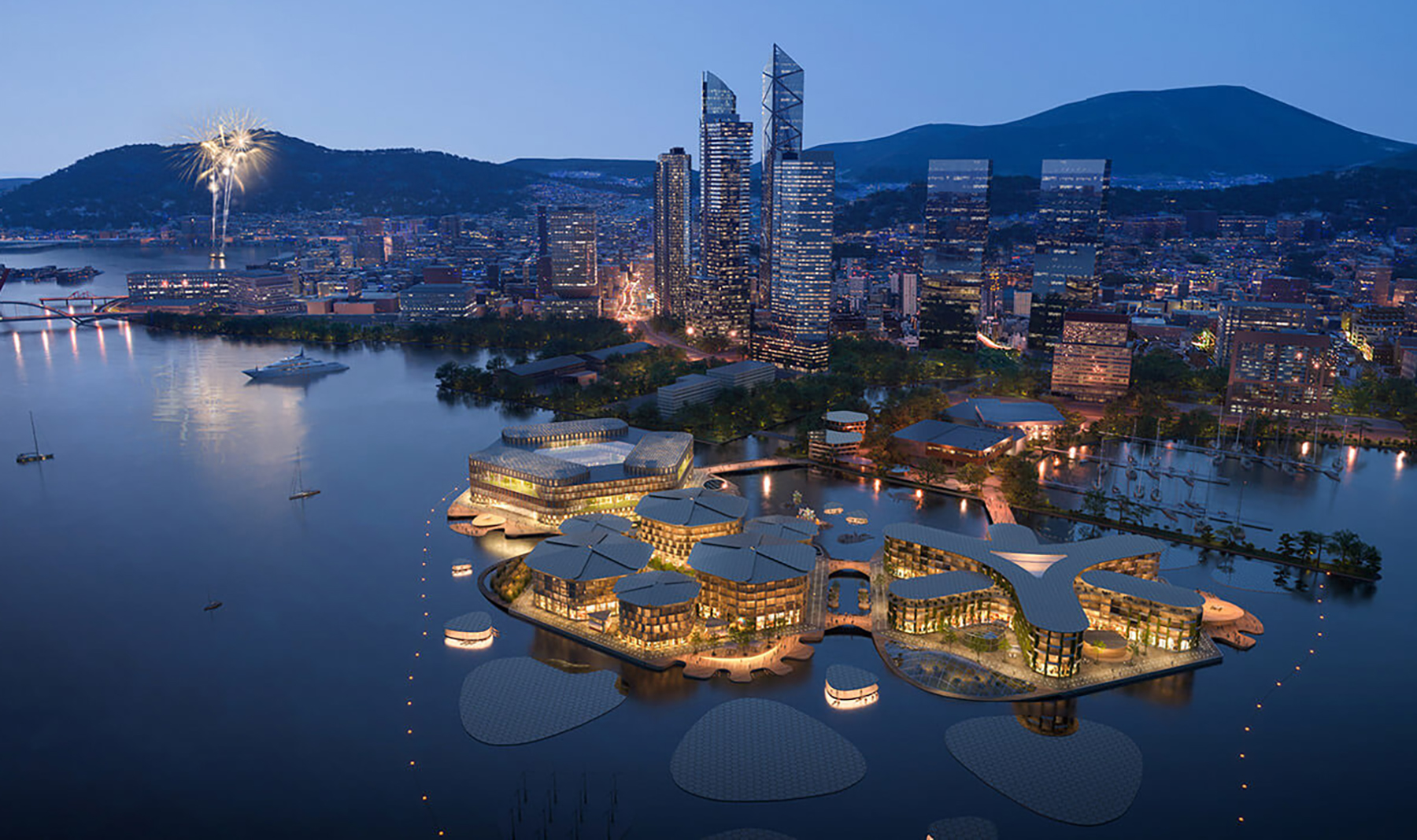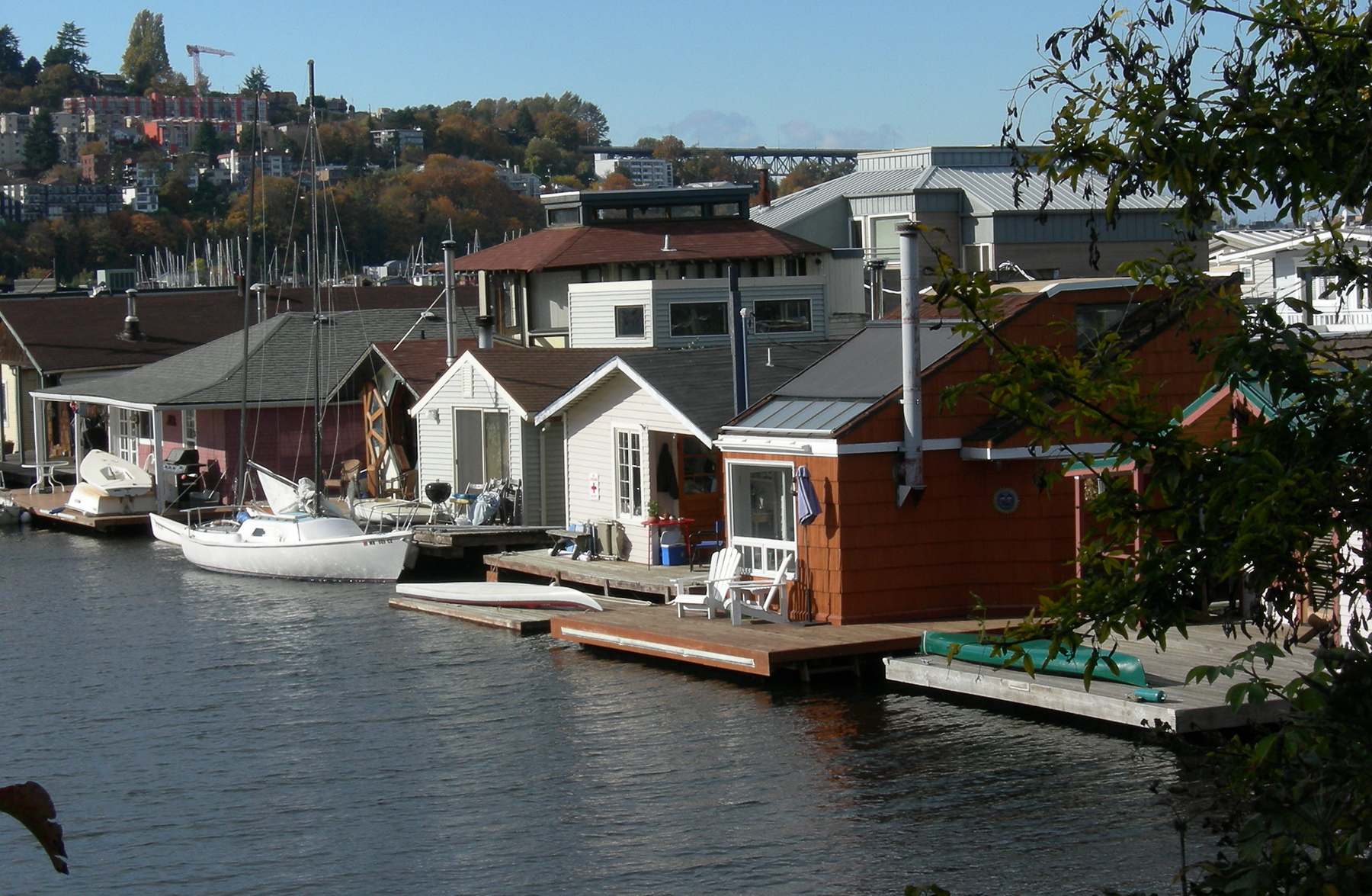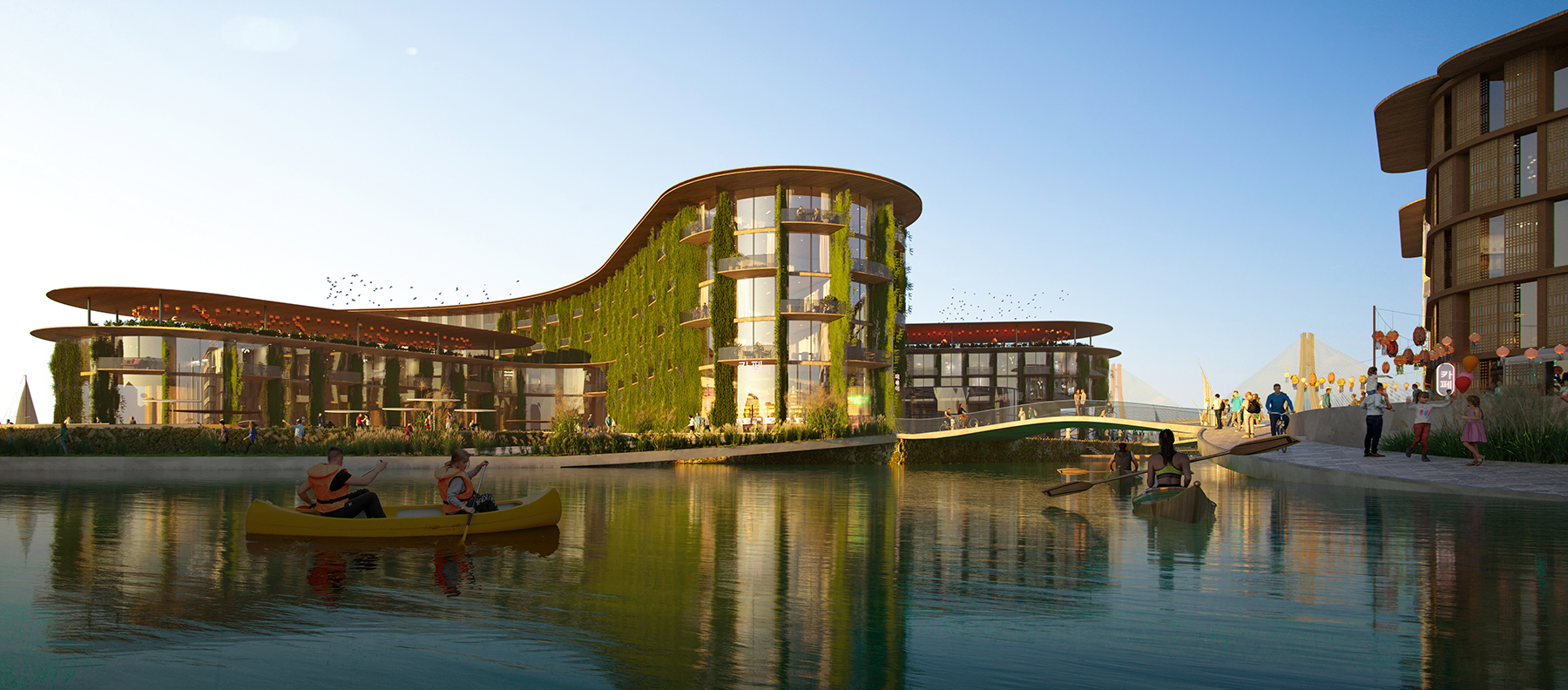
Coastlines have always been a siren song to human settlers. The combination of abundant natural resources, fertile land, and proximity to shipping routes make near-sea living an attractive place to grow roots.
Despite the benefits, coastal living can also be fraught – frequent flooding, sea-level rise, and pummeling from extreme storms can be a constant battle. Additionally, some coastal cities are running out of space to build.
Further reading:
- ‘Floating City’ offers urban solution to rising sea levels
- Floating city prototype unveiled for South Korea
- How recent research on rising sea levels could impact coastal designs
Coastal engineering and land reclamation have been the go-to solutions for preserving coastal cities. But today, international researchers are taking a fresh look at an old technology: floating structures.
These new solutions work with rising waters rather than fighting them.
“Floating structures really deserve more attention as a serious climate-adaptation strategy,” said Stefan Huebner, Ph.D., president of the Society of Floating Solutions (Singapore) and a researcher at the National University of Singapore. “The technology is there and improving – but to scale it up, we need to understand and rethink the historical and cultural baggage that has held it back.”
Huebner took a historical and geographical look at the history of floating structures in a paper in the February 2025 issue of the journal Ocean and Coastal Management. In particular, he focused on how different areas of the world view floating structures and what might be needed to move from land-based solutions to floating approaches.
History of floating
From adobe bricks in the desert to sod-roofed log cabins in forested lands, humans have always had a knack for adapting their homes to the environment. In certain parts of the world, floating structures have been a big part of everyday life for communities. “In Asian and South American places like Lake Tempe (in Indonesia), Tonle Sap (in Cambodia), or Lake Titicaca (on the border of Peru and Bolivia), local communities have been building increasingly sophisticated low-tech floating homes out of wood, bamboo, and reeds for many generations,” Huebner said.
In the U.S., floating homes have been around for centuries. Early settlers in Seattle during the 1850s logging boom took advantage of the coastal location and availability of wood to create floating shacks and even bunkhouses for laborers.
Over the past 100 years, houseboat communities have attracted those who wanted a less regulated, nontraditional living situation.
“Houseboats got culturally tagged with the hippie counterculture of the ’60s and ’70s, which did not help their image with regulators,” Huebner explained. “Regulators saw them as loopholes for avoiding property taxes or dodging regulations altogether.” He noted that the rebellious reputation of houseboat residents has lingered.
 Joe Mabel, Wikimedia
Joe Mabel, Wikimedia
There is also a general perception issue for floating structures. Huebner explained that people in the West tend to see the examples of simple floating homes in Asia as primitive or backward thinking.
“These vernacular designs were often seen in Western water management strategies as solutions for small, low-income communities,” he said. “Instead, we have to reconsider them as powerful reminders that floating architecture has been used for centuries as a legitimate, adaptive response to water-level changes.”
Instead of using floating structures, those in the West were drawn to land reclamation. Controlling water levels has always been a tricky endeavor, but the task was made easier by the rise of industrial solutions.
“Steam pumps, also used in coal mines, enabled water removal at huge landfills, and cheap coal allowed for mass manufacturing of energy-intensive materials like steel and concrete, which enabled the construction of large dams and seawalls,” Huebner said. “These efforts helped ‘tame’ water, making floating structures seem unnecessary.”
Land vs. sea
Land reclamation – and the coastal engineering that often accompanies the new shorelines – has been the relied-upon solution for climate mitigation and expanding building areas. But filling in wetlands and harbors has big environmental and financial costs.
Filling in water with sand and other solid materials can wipe out marine and nearshore ecosystems. “Nursery grounds for fish and other marine life cannot always just relocate,” said Huebner, adding that coastal and marine life are adapted to specific conditions like water depth or nutrient flows. “The damage can extend far beyond the physical space of the project.”
In addition, reclaimed land often doesn’t have the same stability as adjacent terrestrial coastlines.
“A lot of land-reclamation projects typically have quite poor earthquake resistance, especially if you are in seismically active areas,” said Shengzhe Wang, Ph.D., an assistant professor in structural engineering and director of the Climate Adaptable Structural Engineering group at the University of Colorado Denver. For instance, the 2011 Tohoku, Japan, earthquake caused widespread liquefaction on reclaimed land.
Wang pointed out that choosing floating solutions over land reclamation can be more cost-effective. “The deeper the harbor, the cost to fill in that land would increase quite rapidly – but that’s not an issue with floating structures,” he said.
Huebner agreed, adding that floating structures do not require reshaping the land. “Their main environmental issues – like casting shade, altering oxygen levels, or attracting invasive species – can be addressed through design and location,” Huebner said.
“In terms of civil engineering and environmental cost, floating options cannot be ignored,” for climate-resilient construction, he added.
Floating structures have international backing and have garnered renewed attention in recent years. Since 2019, the United Nations has been holding Round Table on Sustainable Floating Cities meetings.
In 2022, a partnership between UN-Habitat; Busan, South Korea; and the company Oceanix was formed to design the first sustainable floating city. The multi-neighborhood design will provide mixed-use neighborhoods built on platforms and will focus on zero waste, 100% green energy, and other sustainability goals.
Incorporating more floating structures into cities and communities could be more sustainable and longer-term solutions that adjust to changing conditions. For instance, U.S. residents in the Southeast experience frequent flooding, land subsidence, and hurricane landfalls. The battering from all sides has created difficult conditions for residents in low-lying areas. Although the government has offered assistance for moving inland, many are uninterested in leaving their homes.

“Most people would rather adapt in place than move inland or uphill, as studies have emphasized – so floating homes could offer a way to stay put, even as flooding risks for terrestrial buildings increase,” Huebner said. “But access to the technology and funding is key, and right now there is a big gap between wealthy and less resourced communities, be that urban vs. rural or high-income vs. low-income countries.”
Wang added that there also needs to be a push at the university level to consider climate-adaptation solutions and think creatively about possible engineering solutions. He wants them to be able to discuss options with clients.
“Instead of building higher and higher walls, maybe we could place your structures on water, so that we don’t need to worry about future sea-level rise,” he said.
“Part of my job is to get students to think a little bit more outside of the box.”



